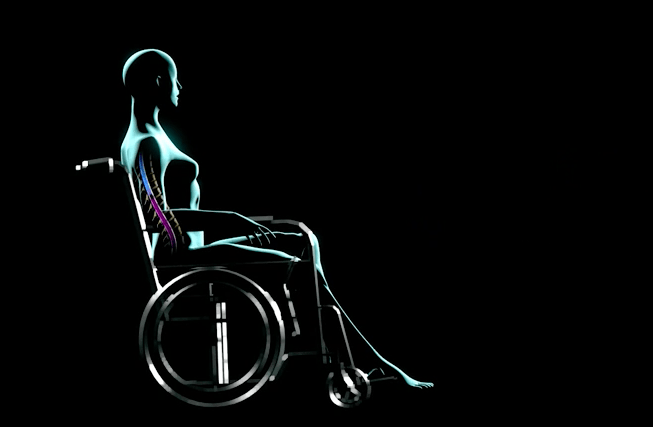
Today is part two of the interview with Sjaak Deckers, co-founder and first CEO of Sapiens Steering Brain Stimulation, who, together with the more recent CEO, Jan Keltjens, sold his start-up to the American Medtronic for 150 million Euros. That was last year. It was a great deal that came along much sooner than expected (read the full story here). Deckers is now in talks with investors about his new start-up. Today we’re delving even deeper and talking about empty agendas and big goals.
 It happened on Monday, 5 January. Sapiens had already been sold in August, but Deckers stayed on until the end of the year to help with the integration into Medtronic. A large part of the team went on to work with Medtronic’s brain probes for Parkinson’s patients. But Sjaak Deckers decided on a different path. He wanted to get another start-up successfully off the ground. But just which one? In any case, on Monday, 5 January his agenda was completely empty.
It happened on Monday, 5 January. Sapiens had already been sold in August, but Deckers stayed on until the end of the year to help with the integration into Medtronic. A large part of the team went on to work with Medtronic’s brain probes for Parkinson’s patients. But Sjaak Deckers decided on a different path. He wanted to get another start-up successfully off the ground. But just which one? In any case, on Monday, 5 January his agenda was completely empty.
A fresh start
“I’ve always said that running a company is very simple. The only thing you need is good people, a clear goal and passion for what you’re doing, and money.” The passion was awoken when he came into contact with a Swiss scientist. That is, Grégoire Courtine, who had been researching spinal cord damage for fifteen years. “Professor Courtine was working on the development of an electronic implant to help people with spinal cord injuries to walk again. A truly unprecedented development.”
The technology may be unprecedented, but investor interest is quite another thing all together. Courtine and Deckers decided to work together to build the company. And attracting investor interest is exactly what Deckers will be doing in the coming period as CEO of G-Therapeutics, as it’s now known.
First thing’s first, how might someone with a spinal cord injury walk again?
“When the spinal cord is injured, the communication between the brain and a part of the body is broken because of the damage to the area. We want to recover this communication with a combination of medication, electrical stimulation and physiotherapy. The electrical stimulation uses electrodes that are implanted into the area of the spinal cord where walking is controlled.”
Lame mice have been tested in Courtine’s lab and, in all cases, the mice could walk again (even upstairs) with the help of electrical stimulation and physiotherapy. A clinical feasibility study will begin this year to see if the stimulation can also work on humans. Medtronic, the current owner of Sapiens, is one of the supporters of the preparation for this research.
You have just started as CEO of G-Therapeutics. What is the most important thing right now?
“The technology we’re developing could be a breakthrough for patients with spinal cord injuries. The development alone is incredibly costly and will take a long time. So the most important thing at the moment is to raise funds. I’m currently in talks with lots of parties who might well be able to invest.”
At the same time, Deckers is speaking to patients and rehabilitation doctors about how his product could help them. They are often very emotional talks. “A large number of people who have sustained a chronic spinal cord injury are between the ages of 20 and 40 years old. They might have had a motorbike or sporting accident, for example. They sit in their wheelchairs with little prospects of improvement from one day to the next. Rehabilitation for spinal cord injury patients is usually just learning to accept your new situation. That’s something we would really like to change.”
Back to what you said about running a company: you have the passion, you’re working on the money and, thanks to a whole team of top scientists in Switzerland, you also have good people. The last thing is a clear goal. What about that?
 “Yes, the B-HAG is very important,” says Deckers. The what? “The Big Hairy Audacious Goal!” It’s one of the terms that the American businessman, Jim Collins, uses in his book “Good to Great”. A B-HAG is not so much a goal as it is a huge, inspiring and not-quite-impossible challenge. Something that can be clearly measured and understood by everyone. For Deckers, the B-HAG for the coming period couldn’t be clearer: “to ensure that people with spinal cord injuries can walk again.”
“Yes, the B-HAG is very important,” says Deckers. The what? “The Big Hairy Audacious Goal!” It’s one of the terms that the American businessman, Jim Collins, uses in his book “Good to Great”. A B-HAG is not so much a goal as it is a huge, inspiring and not-quite-impossible challenge. Something that can be clearly measured and understood by everyone. For Deckers, the B-HAG for the coming period couldn’t be clearer: “to ensure that people with spinal cord injuries can walk again.”
Want to learn more? The Swiss scientist, Grégoire Courtine, briefly explains in the first video and goes into greater depth in the second video about how electrical spinal cord stimulation can help mice, and hopefully one day also humans, to walk again.
Read part one of the interview with Sjaak Deckers here.

